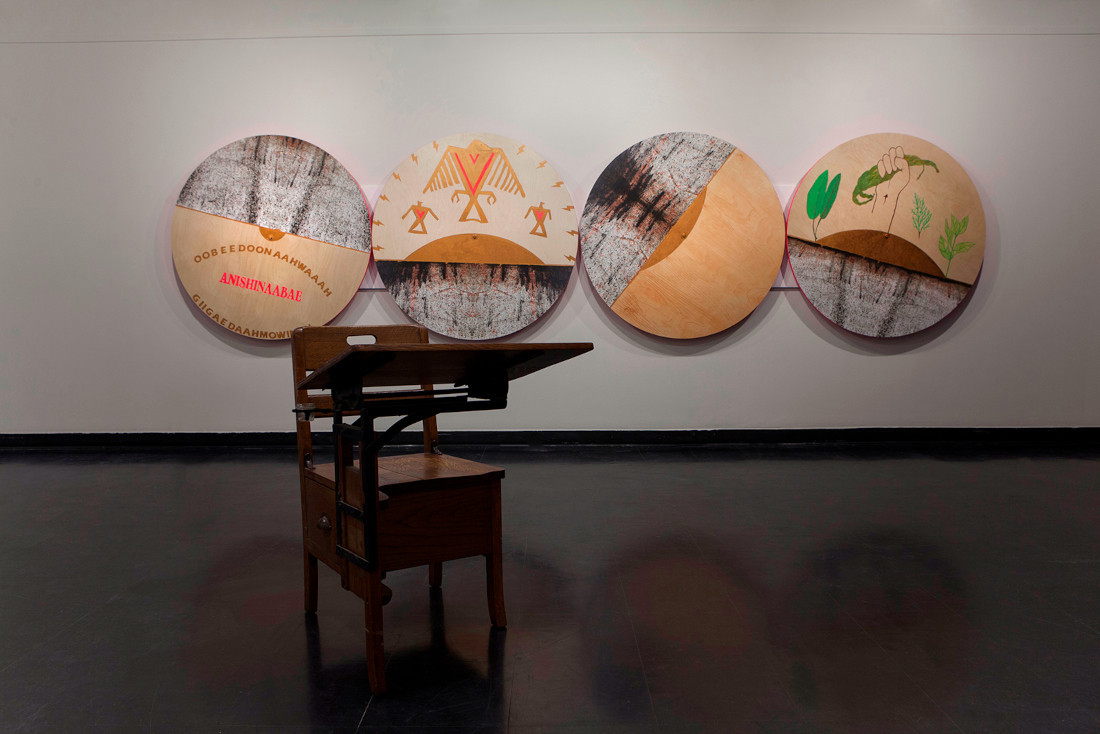Illuminating Indigenous knowledge
Jaimie Isaac on Brings to Light
For Jaimie Isaac, art is more than expression. It’s power. She’s exercising that power through her exhibition Brings to Light at Gallery 1C03, located in Centennial Hall at the University of Winnipeg (U of W).
After graduating from the U of W with a degree in art history, Isaac went on to work for the Aboriginal Peoples Television Network (APTN). During her time at APTN, she wanted to be part of an organization that could tell stories from an Indigenous perspective and counteract the harmful stereotypes and biased coverage perpetuated by other media. Later, Isaac returned to art as a medium through which to record truth and stories.
She says art “tells the stories of Indigenous epistemologies and culture in a visual way ... (that is) different than reading or listening to people in an academic sense. It is more visceral.
“Art as a medium to access knowledge repatriation was significant for me, to really start to understand and translate some of the teachings that I’ve been lucky to receive from my family,” Isaac says.
She emphasizes the importance of restoring Indigenous knowledge, as well as the limited time frame available to do so, as the Elders who carry this knowledge continue to age.
“There is an urgency to knowledge repatriation, as (Elders) carry the stories. They carry the cosmologies, and they carry our family histories,” she says.
Through her work, Isaac hopes to share stories that history has left untold. She references the importance of resources like the TRC Calls to Action and organizations such as the National Centre for Truth and Reconciliation.
For Isaac, these systems exist to “hold on to the history of residential schools, so that it doesn’t happen again, but also so we know what we’re facing as a society.”
The discovery of thousands of unmarked graves on the sites of former residential schools revealed that a number of Canadians are not familiar with the country’s treatment of Indigenous peoples.
A study conducted by the Environics Institute and published in 2022 found that only 62 per cent of Canadians feel very or somewhat familiar with the history of residential schools.
It is this lack of awareness that inspires Isaac “to translate these stories into a visual art form, so (they can be) accessed in a way that people can feel connected.”
One of Isaac’s recent works is titled “Knowledge As Territory: 4 Ways.” This piece “looks at the four ways of knowing and thinking through spirituality, language, art and culture.” The installation features panels with images taken from the inside of Isaac’s family tipi.
The participatory nature of the piece speaks to the power of a single act. “It takes an action to be able to access knowledge and to transmit Indigenous inheritance,” she says.
Isaac finds the hope and courage to tell these stories in both the past and the future. This includes “the ancestors that survived this history and are telling their stories today,” as well as the next generation.
Isaac’s grandmother, Elder Mary Courchene, is a part of this hope. A source of artistic inspiration and collaboration, Isaac is inspired by her willingness to share what she knows.
Isaac says “It’s a labor of love to activate and enact knowledge repatriation.”
She names her son as another source of faith.
“I’m hopeful that accessing language, accessing a whole rich history of Indigenous art and expression is more available to him, because there is the willingness of artists to be able to make work and to share it.”
Brings to Light runs until Feb. 17 at Gallery 1C03, the official art gallery of the U of W. Gallery 1C03 is located on the first floor of Centennial Hall, next to the UWSA Info Booth. For more information, visit uwinnipeg.ca/art-gallery.
Published in Volume 77, Number 13 of The Uniter (January 5, 2023)







